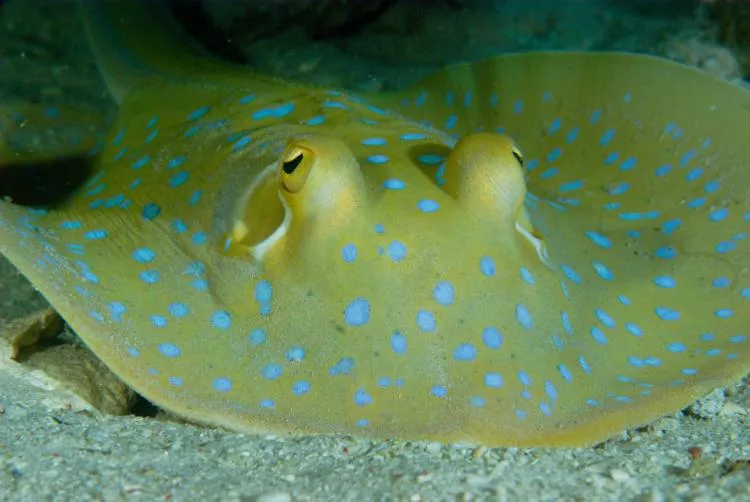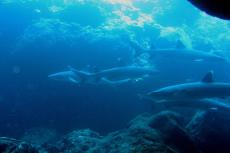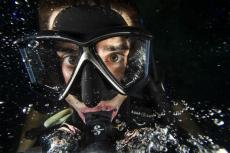Stingrays' bulging eyes makes them more streamlined
Rather than introducing drag, the protruding eyes and mouths of stingrays have the opposite effect, allowing stingrays to swim even faster and more efficiently, hydrodynamic simulations show.
Stingrays have a higher swimming efficiency than most other aquatic animals, and many studies regarding high-performance swimming have focused on the hydrodynamic benefits of stingrays swimming styles: “Rajiform” locomotion (undulation) and “mobuliform” locomotion (flapping), which are considered the key to stingrays' high-performance swimming.
It turns out that the rays protruding eyes and mouth also play a critical role in enhancing the cruising speed of these elegant swimmers. Hyung Jin Sung at the Korea Advanced Institute of Science and Technology in South Korea and his colleagues investigated how the bulging eyes and mouths of stingrays created a set of vortices as the water moved over them. One vortex pushed water towards the back of the ray, leaving an area of lower pressure in front of it. This low-pressure zone allowed the simulated rays to swim faster.
A spanwise vortex pushed water to the sides, increasing the pressure below the ray and decreasing the pressure above it. This made each stroke of the fins generate more thrust, increasing the efficiency of swimming. In the hydrodynamic simulations, the cruising speed with "optimal" eye and mouth protrusions were 20.5% faster and the efficiency 10.6% greater than in the absence of eye and mouth protrusions.
Fact file
The bluespotted ribbontail ray (Taeniura lymma) is a species of stingray in the family Dasyatidae. Found from the intertidal zone to a depth of 30 m (100 ft), this species is common throughout the tropical Indian and western Pacific Oceans in nearshore, coral reef-associated habitats. It is a fairly small ray, not exceeding 35 cm (14 in) in width, with a mostly smooth, oval pectoral fin disc, large protruding eyes, and a relatively short and thick tail with a deep fin fold underneath. It can be easily identified by its striking color pattern of many electric blue spots on a yellowish background, with a pair of blue stripes on the tail.



























